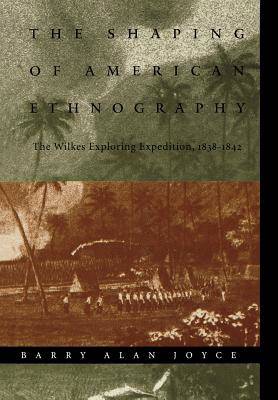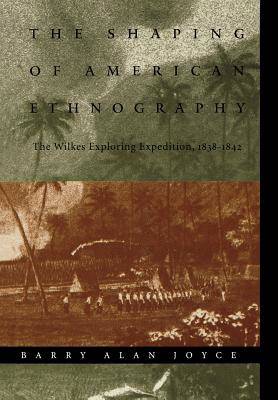
- Afhalen na 1 uur in een winkel met voorraad
- Gratis thuislevering in België vanaf € 30
- Ruim aanbod met 7 miljoen producten
- Afhalen na 1 uur in een winkel met voorraad
- Gratis thuislevering in België vanaf € 30
- Ruim aanbod met 7 miljoen producten
Zoeken
€ 68,95
+ 137 punten
Omschrijving
In August of 1838 the United States Exploring Expedition set sail from Norfolk Navy Yard with six ships and more than seven hundred crewmen, including technicians and scientists. Over the course of four years the expedition made stops on the east and west coasts of South America; visited Australia, New Zealand, Samoa, and Tahiti; discovered the Antarctic land mass; and explored the Fiji Islands, Tonga, the Hawaiian Islands, and the Pacific Coast of North America. In The Shaping of American Ethnography Barry Alan Joyce illuminates the process by which the Americans on the expedition filtered their observations of the indigenous peoples they encountered through the lens of their peculiar constructions of "savagery" as shaped by the American experience. The native peoples were classified according to the prevailing American perceptions of Native Americans as "wild" and African American slaves as "docile." The use of physical characteristics such as skin color as a classificatory tool was subordinated to the perceived image of the prototypical savage. Joyce argues that the nineteenth-century explorers shared the attributes that characterize the discipline of anthropology in any age--a reliance on synthetic systems that are period- and culture-dependent. By applying American images of savagery to world cultures, American scientists and explorers of this period helped construct the foundation for an American racial weltanschauung that contributed to the implementation of manifest destiny and laid the ideological foundations for American expansion and imperialism in the nineteenth and twentieth centuries.
Specificaties
Betrokkenen
- Auteur(s):
- Uitgeverij:
Inhoud
- Aantal bladzijden:
- 197
- Taal:
- Engels
- Reeks:
Eigenschappen
- Productcode (EAN):
- 9780803225916
- Verschijningsdatum:
- 1/04/2001
- Uitvoering:
- Hardcover
- Formaat:
- Genaaid
- Afmetingen:
- 160 mm x 236 mm
- Gewicht:
- 476 g

Alleen bij Standaard Boekhandel
+ 137 punten op je klantenkaart van Standaard Boekhandel
Beoordelingen
We publiceren alleen reviews die voldoen aan de voorwaarden voor reviews. Bekijk onze voorwaarden voor reviews.











